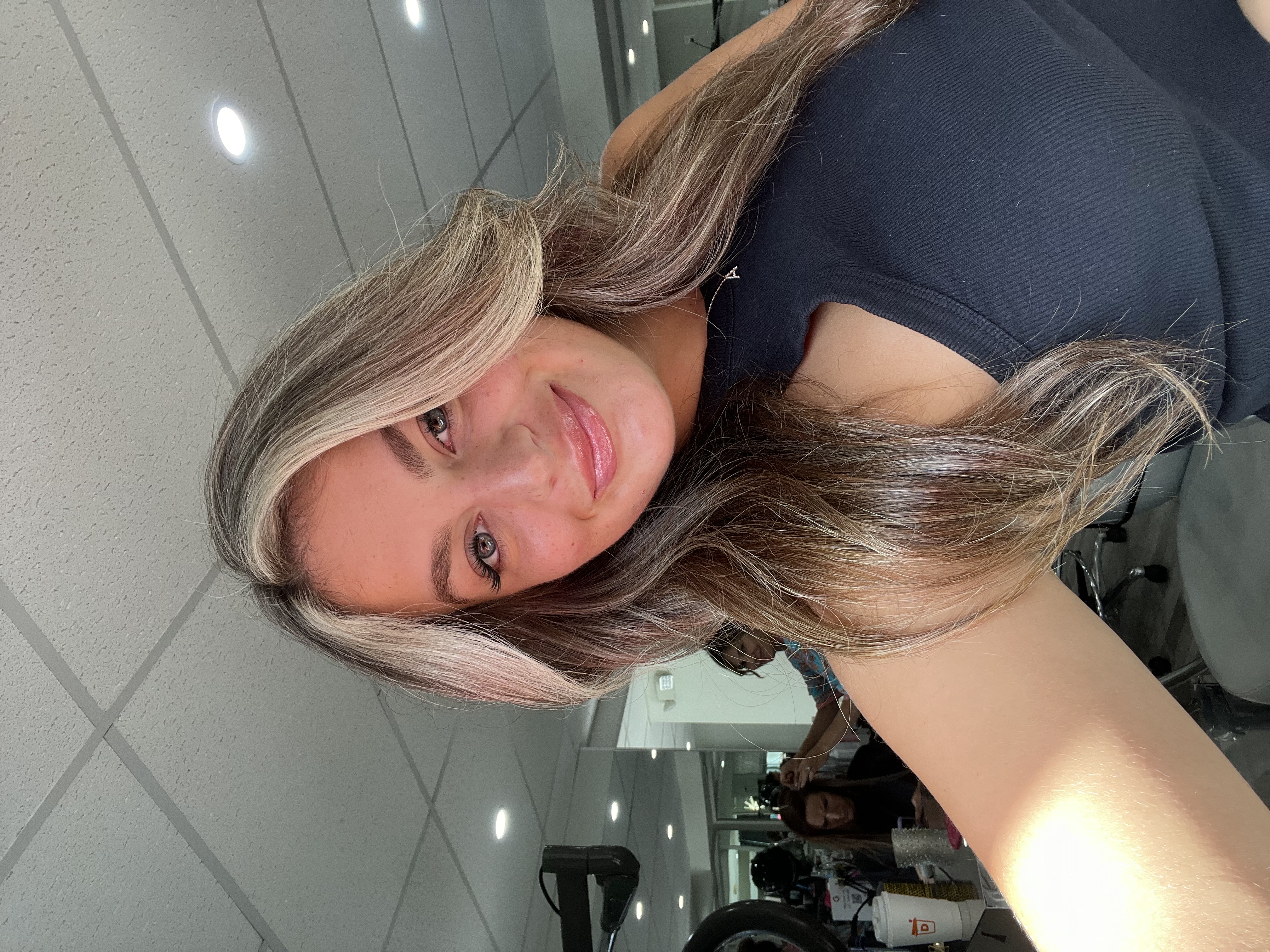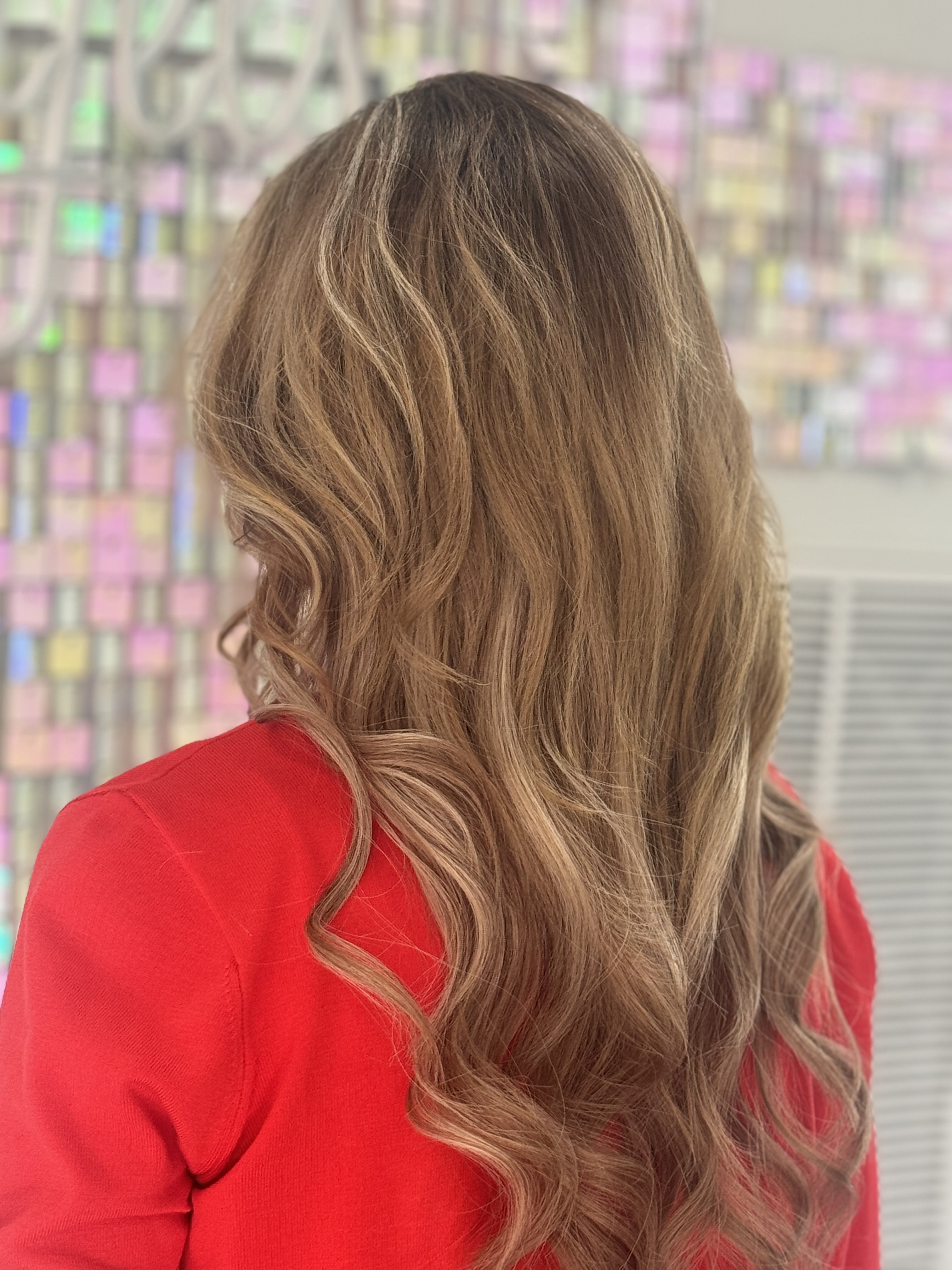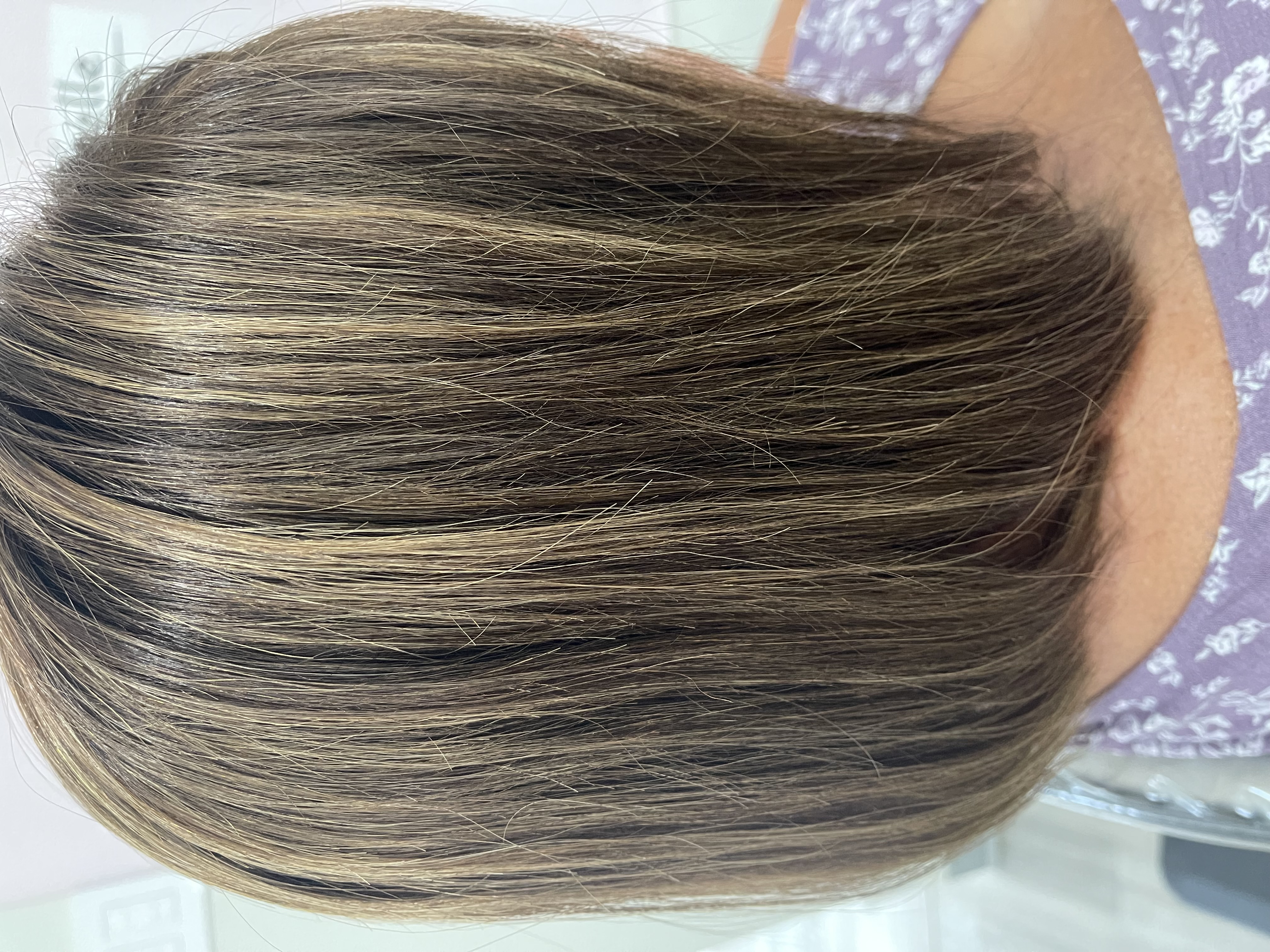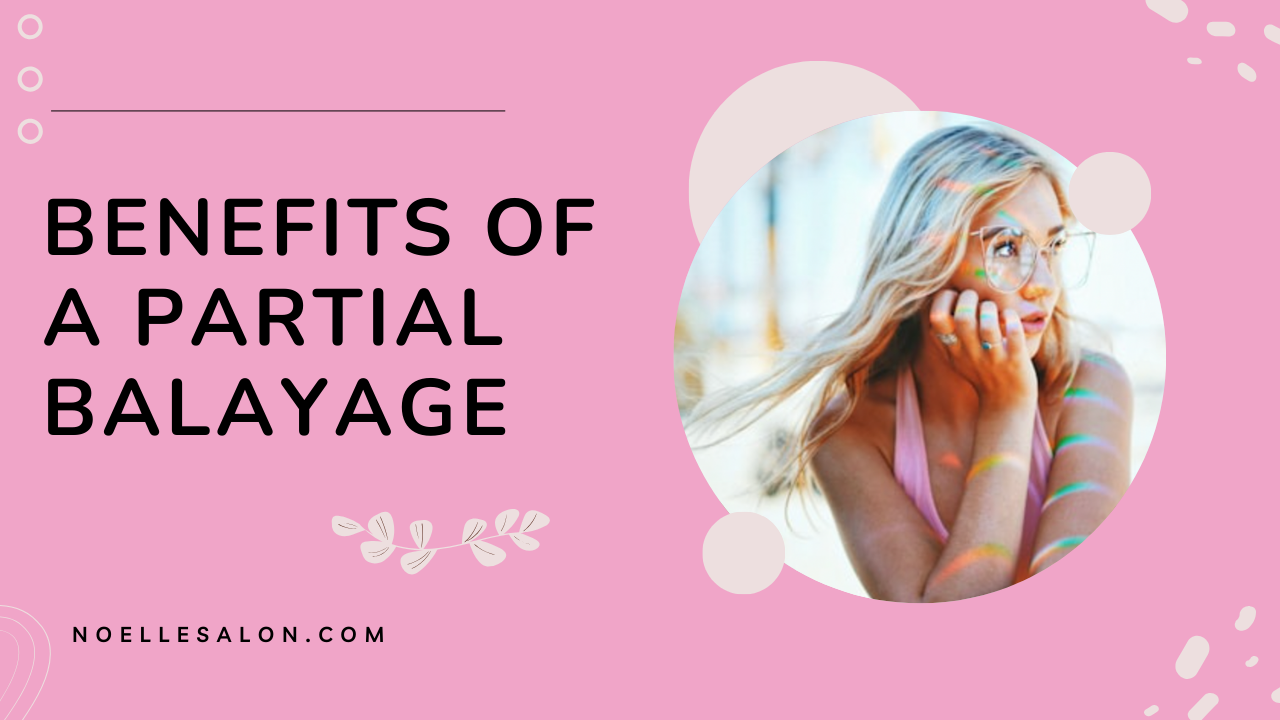Elevate Your Style with Partial Balayage: Must-Try Trends
What is Partial Balayage?
Partial balayage is a versatile hair coloring technique that involves a skilled colorist hand-painting lightening highlights onto specific sections of hair, creating a natural, sun-kissed effect. Unlike traditional highlights, partial balayage only focuses on certain sections of the hair, adding dimension and depth while maintaining a low-maintenance look. This trendy style, often compared to traditional balayage, is perfect for those looking to elevate their hair with a subtle yet impactful change.

What are the Benefits of Partial Balayage?
1. Natural Look: Partial balayage offers a more natural-looking result compared to traditional highlights, blending seamlessly with your hair color.
2. Low Maintenance: Since it targets specific sections of the hair, partial balayage requires less upkeep than full highlights, perfect for those with busy schedules.
3. Dimension and Depth: By adding highlights strategically, partial balayage enhances the dimension and depth of your hair, creating a multi-dimensional effect.
Partial balayage continues to reign as a top choice for those seeking a stylish yet effortless hair transformation, especially for those with dark blonde hair and dark locks. From subtle face-framing highlights to bold contrast on the ends, there are endless ways to customize your partial balayage look, including focusing on the upper layer for a more luminous effect. Experiment with a fresh haircut that incorporates caramel tones for warmth, and ash tones for coolness, or opt for a mix of both for a unique blend. Whatever your preference, partial balayage offers a fresh take on traditional highlighting techniques, giving you that coveted sun-kissed glow all year round.
Partial Balayage vs. Full Balayage
Partial balayage has gained popularity for its ability to enhance hair with a natural, sun-kissed effect. By focusing on specific sections of the hair, this technique offers a low-maintenance way to add dimension and depth to your hairstyle. Unlike full balayage, which covers the entire head, partial balayage is more targeted, making it ideal for those looking for a subtle yet impactful change.
The benefits of partial balayage lie in its ability to provide a natural look that blends seamlessly with your hair color, requiring less upkeep due to its targeted application.
Differences in Technique
The technique used in partial balayage focuses on specific sections of the hair, creating a multi-dimensional effect with dimension and depth. This approach requires less upkeep than full highlights, making it perfect for those with busy schedules.
In contrast to full balayage which covers the entire head, partial balayage offers a more targeted application, resulting in a subtle yet impactful change. This color technique enhances your look by customizing face-framing highlights tailored to your face shape on the top layer of hair or bold contrasts on the ends, providing endless possibilities to experiment with different tones for a unique blend.
Differences in Price and Maintenance
Partial balayage typically comes at a lower price point compared to full balayage, as it requires less product and time in the salon. Additionally, its targeted application means that maintenance sessions can be spaced out further, saving you both time and money in the long run.
When considering partial balayage, keep in mind that regular hair appointments for toning may be necessary to maintain the desired ash tones or color blend, as this technique typically allows for minimal imbalances and fewer visible regrowth lines. However, the overall upkeep is minimal compared to other highlighting techniques, making it a convenient choice for those seeking a fresh look without the commitment of frequent salon visits.
How Do You Apply Partial Balayage?
Check the roots
When applying partial balayage, start by checking the roots to determine which sections need a root smudge and highlighting. This step ensures a targeted application that blends seamlessly with your natural hair color, creating a multi-dimensional look as you wrap the highlighted sections in foil for optimal dye absorption. By focusing on specific areas, you can customize face-framing highlights or bold contrasts for a unique and personalized finish.
Mix the formula
Mixing the formula is a crucial step in the partial balayage application process. Choose a lightener or color shade that complements your natural hair color and desired end result. By customizing the formula, you can achieve a seamless blend that enhances your overall look while creating depth and dimension.
Go with a higher-volume developer
When opting for partial balayage, the choice between a full or partial application can significantly impact both the price and maintenance of your gorgeous tresses. Partial balayage offers a more cost-effective option due to its focused application, allowing you to spend less time while causing less damage from bleach, resulting in fewer salon visits for touch-ups. This method allows for personalized highlights that seamlessly blend with your natural hair color, requiring minimal upkeep in the long term.
For those considering partial balayage, keep in mind that occasional toning appointments may be needed to maintain specific tones or color blends.
Plan the Placement
When planning the placement of your partial balayage highlights, consider your hair texture and desired end result. Strategically placing highlights around the face can create a sun-kissed effect, while focusing on lower sections can add depth and dimension to your strands. By carefully mapping out where each highlight will be placed, you can achieve a tailored look that enhances your natural features and complements you
Adjust with toner
Adjusting the toner after a partial balayage session can help fine-tune the color and achieve the desired tone. Toning helps neutralize any unwanted brassiness or enhance certain hues in your highlights, creating a more polished and cohesive look overall. Work with your stylist to select the right toner that complements your base color and highlights for a customized finish that suits your style and skin tone perfectly.
Wash
After your partial balayage session, it's important to follow a proper washing routine to maintain your color and keep your hair healthy. Use sulfate-free shampoos and conditioners specifically formulated for colored hair to prevent premature fading. Washing your hair with lukewarm water and avoiding excessive heat styling can also help preserve the vibrancy of your highlights.
Additionally, consider incorporating a deep conditioning treatment into your routine to keep your hair nourished and hydrated. By following these simple steps, you can extend the life of your partial balayage and enjoy beautiful, low-maintenance highlights for weeks to come.
Tips for Prolonging Your Balayage?

Proper Care Products
To prolong the beauty of your balayage, invest in quality hair products and hair care products designed for colored hair. Sulfate-free shampoos and conditioners will help maintain your color vibrancy and prevent fading. Implement a regular washing routine with lukewarm water to retain the richness of your highlights. Deep conditioning treatments are essential for nourishing and hydrating your hair, ensuring a long-lasting and healthy balayage effect. Consult your stylist for personalized recommendations tailored to your hair type and lifestyle.
Minimizing Heat Styling
Minimizing heat styling is crucial in prolonging the lifespan of your balayage. Excessive heat can strip your hair of its natural oils and cause dry hair color to fade more quickly. Additionally, excessive sun exposure can also contribute to color fading. Embrace air-drying or use heat-protectant products when styling with hot tools to prevent damage and preserve the vibrancy of your highlights. By reducing heat exposure, you can maintain a stunning and healthy balayage for an extended period.
How to Choose the Best Balayage Technique?
When choosing the best balayage technique for you, consider factors such as your natural hair color, skin tone, and maintenance preferences. For a low-maintenance option, partial balayage is ideal as it offers subtle dimension without requiring frequent touch-ups. If you prefer a more dramatic look, full balayage might be the way to go. Consult with your stylist to determine the technique that will complement your features and fit your lifestyle. Remember, communication is key to achieving the perfect balayage tailored to your individual style and needs.
Factors to Consider When Choosing a Balayage Technique:
1. Natural Hair Color: Ensure the balayage technique complements your natural hair color for a seamless blend.
2. Skin Tone: Consider how the balayage shades will harmonize with your skin tone to enhance your overall look.
3. Maintenance Preferences: Opt for a technique that aligns with your maintenance routine, whether low-key or high-maintenance.
4. Stylist Consultation: Seek advice from your stylist to determine the best technique based on your unique features and lifestyle.
Understanding Your Hair Type
Before deciding on a balayage technique, it's essential to assess your hair type and the desired look you want to achieve. Fine hair may benefit from a soft, subtle balayage, while thicker hair can handle more contrast and dimension. Similarly, if you aim for a natural sun-kissed effect, a soft balayage is ideal, whereas a bolder look may require stronger contrasts and more pronounced highlights.
Conclusion
Choosing the right balayage technique is a personalized decision that takes into account various factors such as your natural hair color, skin tone, and maintenance preferences. Whether you opt for a partial balayage for a subtle touch or go all out with a full balayage for a bold statement, communication with your stylist is key. Consider how the technique will complement your features, align with your lifestyle, and enhance your overall look. By understanding your hair type and desired outcome, you can achieve a customized balayage that suits you perfectly.

Questions:
Difference Between Balayage and Ombre?
Balayage and ombre are both popular hair coloring techniques that create a gradual color transition, but they differ in execution. Balayage involves hand-painting highlights onto sections of the hair for a more natural, sun-kissed look with softer, blended lines. On the other hand, ombre features a distinct color contrast between the roots and ends of the hair, typically achieved through a more structured color placement or blending technique. Balayage offers a seamless blend and is more customizable, while ombre provides a more pronounced contrast between colors.
Can Do a Partial Balayage on Short Hair?
Yes, you can definitely get a partial balayage on short hair! Partial balayage is a versatile technique that can be tailored to suit different hair lengths and styles. When done on short hair, a partial balayage can add dimension, texture, and depth to your hair without overwhelming or overpowering your natural color. Be sure to consult with your stylist to discuss the best placement and technique for achieving your desired look on short hair.
How Often Should I Touch-up?
Partial balayage touch-ups typically depend on individual hair growth and maintenance preferences. On average, it's recommended to refresh your partial balayage every 8-12 weeks to maintain its vibrancy and dimension. However, consulting with your stylist for personalized advice based on your hair growth rate and desired look is key to keeping your partial balayage looking fresh and seamless. Regular touch-ups can help preserve the integrity of the color and keep your style looking polished.
Does Partial Balayage Work on Dark Hair?
Partial balayage can definitely work on dark hair! This technique can beautifully enhance dark hair by adding dimension, lightness, and a sun-kissed effect. Since balayage is a customizable highlighting method, it can be adapted to complement dark hair tones while still providing a natural and blended look. Your stylist can tailor the placement and choice of lighter shades to ensure that the partial balayage seamlessly blends with your dark hair for a stunning result.











